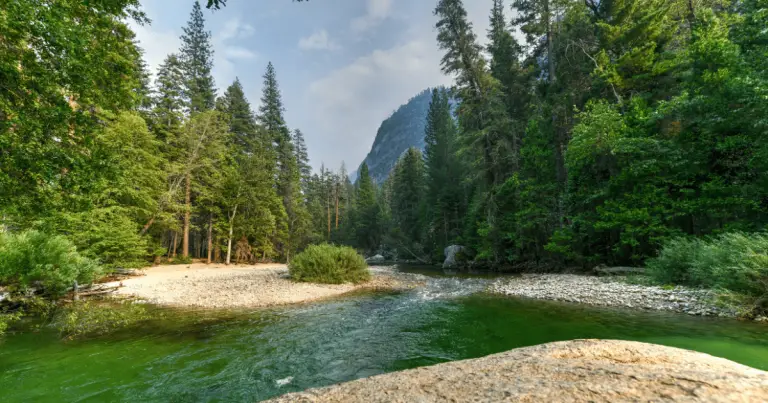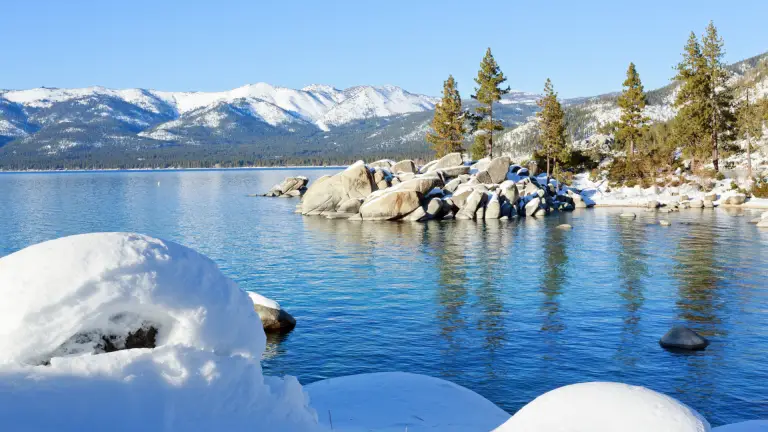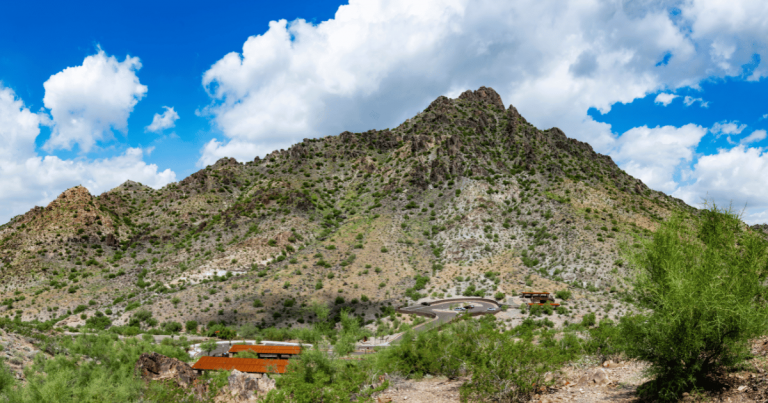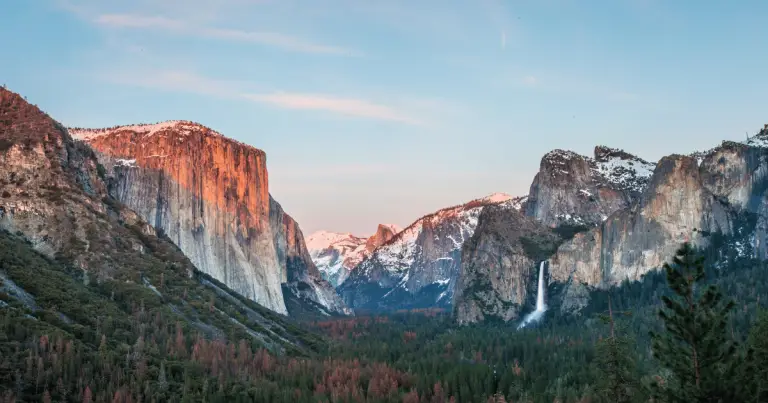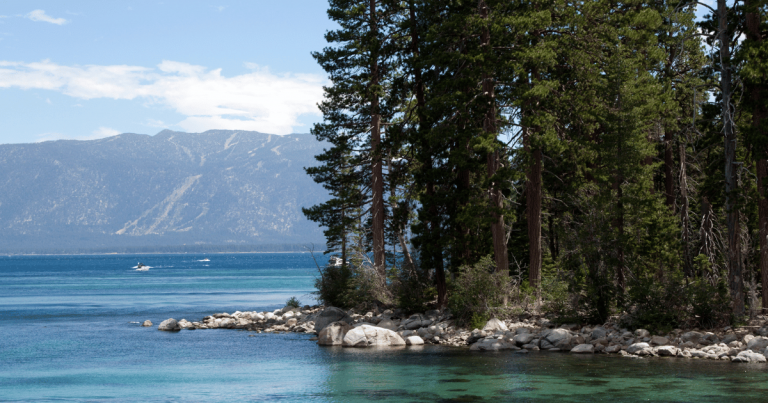Discover the Beauty of Yellowstone National Park South Entrance
If you’re an avid traveler and nature enthusiast, you’re likely well aware that Yellowstone National Park South Entrance is a gateway to adventure and promises an unforgettable journey into the heart of America’s wilderness. From here, you can explore the breathtaking landscapes, wildlife, wildflowers blooming in the spring, the snow-dusted landscapes in the winter and the geothermal activity that the park is famous for.
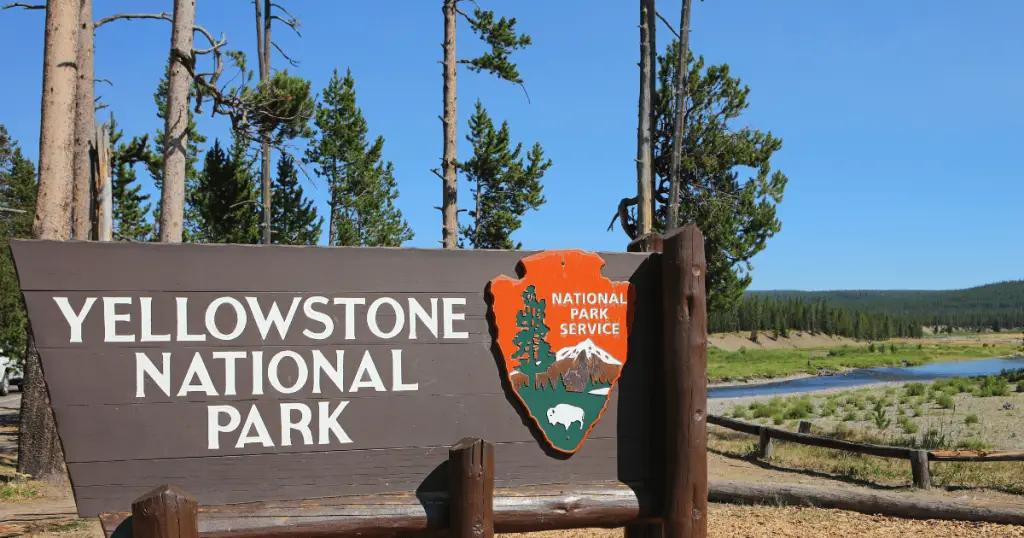
While the South Entrance of the Yellowstone National Park is well-known as a popular destination for tourists, it holds an even more special allure for photographers, seeking to capture the raw and untamed beauty of nature. This corner of the park presents a canvas of tranquility, intimate encounters, and ever-changing beauty that beckons photographers to capture its secrets through their lenses.
Embarking on a Journey: The Exact Location of Yellowstone National Park South Entrance
The south entrance to Yellowstone National Park is located in Wyoming, near the small town of Jackson. Getting to this entry point can be an adventure in itself, and there are several ways to reach it:
- By Car: The most popular method is by car, which allows for the flexibility of exploring at your own pace. If you’re coming from Jackson, you can take the US-191 N/US-26 W/US-89 N, following this scenic route north which takes you directly to the park’s south entrance.
- By Plane: For those coming from further afield, the closest airport to the South Entrance is Jackson Hole Airport. Upon landing, you can rent a car or take a taxi to the park. The drive from the airport to the park entrance is approximately an hour.
- By Bus: Another option is to take a bus operated by the START Bus system, which runs from the city of Jackson to the entrance of the park. This is a great option for those who prefer not to drive or want to reduce their carbon footprint.
Remember to plan your trip in advance, checking the park’s official website for any seasonal road closures or restrictions that may affect your journey.
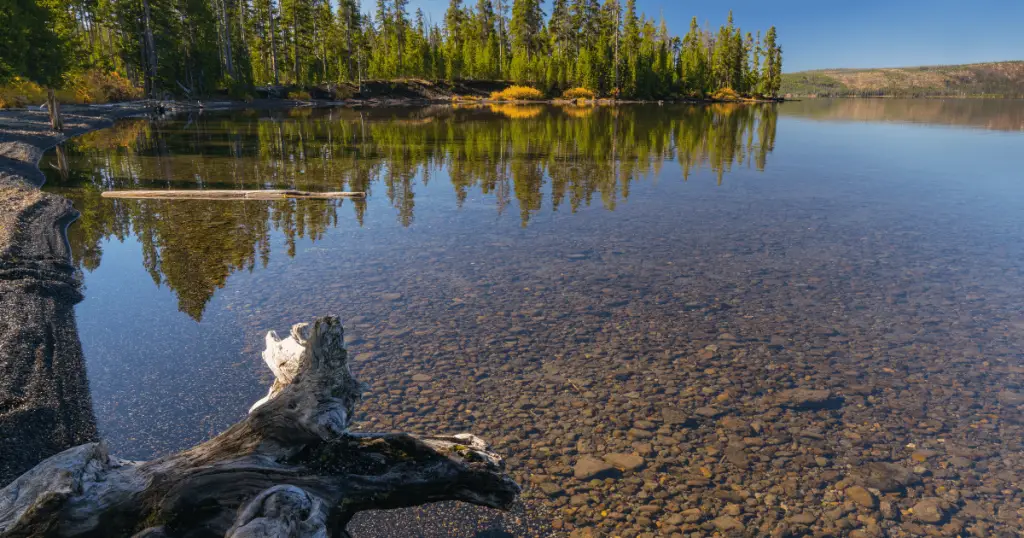
What to See and Do at Yellowstone National Park South Entrance
When you embark on your journey through the South Entrance, you’ll discover a world filled with diverse attractions, stunning trails, and hidden gems that truly encapsulate the spirit of Yellowstone National Park. Here’s a glance at what awaits you:
- Old Faithful: Perhaps the most iconic feature of Yellowstone National Park, Old Faithful is a must-see. This impressive geyser erupts approximately every 90 minutes, shooting boiling water up to 185 feet in the air.
- West Thumb Geyser Basin: Situated beside the stunning Yellowstone Lake, this area features hot springs, geysers, and thermal features. Don’t miss the Abyss Pool, one of the deepest hydrothermal pools in the park.
- Moose Falls: Just a short walk from the South Entrance, Moose Falls is a 30-foot waterfall that offers a serene spot away from the bustling crowds.
- Lewis Lake: The third largest lake in the park, Lewis Lake is a hub for fishing and boating enthusiasts. It’s also a splendid location for picnicking, surrounded by the park’s characteristic lodgepole pine forest.
- Heart Lake Trail: This trail leads you to Heart Lake, a picturesque and secluded lake. This trail is great for wildlife sightings, including grizzly bears and elk.
- Shoshone Lake and Lone Star Geyser: Accessible via a quiet and scenic trail, Shoshone Lake is the largest backcountry lake in the park. The route to the lake includes Lone Star Geyser, which erupts approximately every 3 hours.
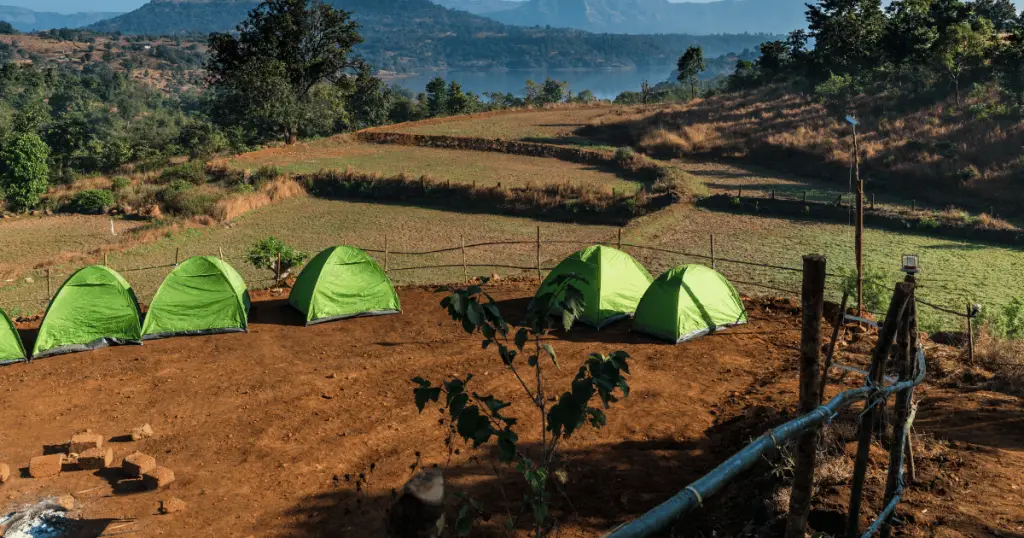
Camping in Yellowstone National Park South Entrance
Yellowstone National Park also offers a few campgrounds near the South Entrance, providing campers with an immersive experience in nature, complete with breathtaking views and access to a range of amenities.
Grant Village Campground
This is the closest campground to the South Entrance. Each of its 430 sites accommodates tents and RVs, and you’ll find amenities like flush toilets, cold running water, picnic tables, and fire pits. There are also shower and laundry facilities available. However, it’s important to note that there are no RV hookups. Reservations can be made via the National Recreation Reservation Service and are highly recommended during the peak summer season.
Lewis Lake Campground
Situated near the shores of the beautiful Lewis Lake, this campground is a bit more primitive, offering 85 sites with vault toilets and summer drinking water. The sites here are first-come, first-served, and the camping season typically runs from mid-June through early November.
Bridge Bay Campground
Located near Yellowstone Lake, Bridge Bay offers 432 sites with amenities such as flush toilets, cold running water, and dump stations for RVs. Reservations can be made via the National Recreation Reservation Service. The campground opens in late May and closes in mid-September.
Camping Tips
Remember that camping in Yellowstone is an experience that brings you up close to nature, and that includes wildlife. Always store food and scented items in bear-proof containers or in your vehicle. Never leave them out, as they may attract bears and other wildlife. Make sure you respect the quiet hours (10 pm to 7 am) and keep your campsite clean.

Wildlife at Yellowstone National Park South Entrance: A Diverse Ecosystem
Yellowstone National Park’s south entrance boasts a remarkable array of wildlife that thrives in its diverse ecosystems. The park is home to more than 60 species of mammals, including grizzly bears, wolves, elk, bison, and moose, each playing their part in maintaining the ecological balance.
Best Times and Locations for Wildlife Viewing
The best time for wildlife viewing in Yellowstone often depends on the species you’re hoping to see:
- Bison and Elk: These majestic creatures can be spotted throughout the year, with the Lamar Valley and Hayden Valley being prime locations.
- Bears: Spring and early summer, particularly May and June, are the best times to see bears emerging from hibernation. The areas around Tower–Roosevelt and Canyon Village provide excellent opportunities for bear sightings.
- Wolves: Dawn and dusk, particularly in winter, are the best times to observe wolves, especially in the Northern Range and Lamar Valley.
- Birds: Birdwatchers will find that spring and early summer bring migratory birds back to the park, making it an ideal time for birding.
FAQs about Yellowstone National Park South Entrance
Fees and Other Charges at Yellowstone National Park South Entrance
- Private, Non-commercial Vehicles: The entrance fee is $35 per vehicle and is valid for seven days at all Yellowstone National Park entrances.
- Motorcycles and Snowmobiles: The charge is $30 per vehicle.
- Individuals: For pedestrians, bicyclists, and those arriving on non-commercial buses, the fee is $20 per person aged 16 years and older.
- Annual Pass: An annual pass for Yellowstone National Park is available at $70. This pass provides unlimited entry for 12 months from the time of purchase.
For camping, each campground has its own pricing structure. For instance, at the Grant Village Campground, the cost per night ranges from $31-$35, depending on the amenities chosen. Charges can vary, so it’s advisable to check the park’s official website.
Where to Buy Tickets for Yellowstone National Park South Entrance
Entrance fees or passes for Yellowstone National Park can be purchased at the park entrance station, online and from third-party vendors. It is advisable to verify the legitimacy of the vendor before making a purchase.
When is the Ideal Time to Visit Yellowstone National Park South Entrance
The best time to visit Yellowstone National Park is during the summer months of July and August. This is when the weather is typically warm and all the park’s services and facilities, including roads and visitor centers, are open. However, it’s also the park’s busiest period, so expect larger crowds. For those who prefer a quieter experience, the months of May, June, and September offer slightly cooler weather and fewer visitors, but keep in mind that some services may be limited during these times. If you’re a winter sports enthusiast, consider visiting from December to February, when you can enjoy snowmobiling, cross-country skiing, and snowshoeing.
Final Thoughts
The South Entrance of Yellowstone National Park offers an unparalleled mix of natural beauty, rich wildlife, and outdoor adventure. Whether it’s the thrill of spotting a grizzly bear emerging from its winter slumber, the awe-inspiring sight of herds of bison and elk in their natural habitat, or the joy of camping under the starry night sky, there’s something for everyone. With careful planning and respect for nature, your visit will undoubtedly leave you with lasting memories and a deeper appreciation for the wonders of the natural world.


